Do you have a question about the Panasonic KX-TGF943 and is the answer not in the manual?
Details the different models and their part numbers for base unit and handset.
Lists supplied accessories with quantities for each model.
Information on ordering additional or replacement accessories for the phone.
Information on how to add optional handsets to expand the phone system.
Explains the meaning of various symbols used on the equipment.
Covers safety, power, installation, operations, medical, and cautions.
Details battery usage, charging, safety, and important instructions.
Tips for best performance, placement, environment, routine care, and disposal.
Technical specs and legal notices for product usage.
Step-by-step guide to connect the base unit, charger, and telephone line.
Guide on how to install rechargeable batteries correctly.
Instructions for charging batteries and understanding battery level icons.
Identifies and explains the function of various buttons on the handset.
Identifies and explains the function of controls on the base unit.
Explains the meaning of icons displayed on the handset and base unit.
Instructions for changing the display language and other settings.
Setting voice language, recording greetings, date/time, dialing mode.
Explains the feature that alerts when battery is low.
How to configure the low battery alert feature.
Instructions for making calls using the handset and base unit.
How to make calls from and erase entries in the redial list.
How to adjust volume and use the pause function during calls.
Steps for answering incoming calls using the handset or base unit.
Adjusting ringer volume and using hold, mute features.
Using flash, call waiting, noise reduction, and equalizer functions.
How to record phone conversations using the handset or base unit.
Joining existing calls and establishing conference calls.
How to make intercom calls between handsets or base unit.
Features for auto intercom, power backup, and making calls during power failure.
Specific steps for making calls during a power outage with one or more handsets.
Explains the voice command feature and how to enable/configure it.
Procedure for answering incoming calls using voice command.
Procedures for manually blocking calls and managing the block list.
Blocking unknown numbers, ranges, and setting the first ring.
Procedures to unblock callers and view/clear blocked call count.
Enabling automated blocking, changing access code.
Adding names to bypass blocking and customizing greeting messages.
Feature to screen telemarketing calls by asking for names.
Feature to identify and alert about potential scam calls.
Step-by-step guide to add new contacts to the phonebook.
How to save redial list numbers and caller ID information to the phonebook.
Searching, calling, editing, and managing phonebook entries and groups.
How to delete phonebook entries and use chain dial.
Assigning numbers to speed dial keys from manual entry or phonebook.
Editing and erasing speed dial entries, and making calls using them.
Methods to access settings via menus or direct command codes.
Setting date/time and configuring memo alarms.
Setting up speed dial and adjusting ringer volumes and tones.
Configuring silent mode, talking caller ID, and related features.
Options for call blocking, voice command, and auto intercom.
Managing voicemail settings and adjusting LCD contrast.
Setting handset name, voice command, auto intercom, caller ID edit, and line settings.
Accessing phonebook, caller list, and answering device settings on the base unit.
Setting up alarms with options for once, daily, or weekly.
Setting periods for silent mode and customizing start/end times.
Configuring the baby monitor feature and selecting units to monitor.
Customizing handset names and managing unit registration/deregistration.
Overview, requirements, and features like Talking Caller ID.
How to view call history and call back entries.
Modifying caller numbers and using auto-edit feature.
How to remove selected or all caller history entries.
Turning the system on/off, memory, and managing greeting messages.
How to listen to messages from handset or base unit.
How to operate the answering system during message playback.
Setting up audible alerts and phone notifications for new messages.
Storing numbers, turning alerts on/off, editing, erasing, and remote access code.
Accessing and controlling the answering system remotely.
Call screening, ring count, recording time, and greeting-only options.
Information on using voicemail service and detecting VM tones.
How to listen to voicemail and mount the base unit on a wall.
Instructions for mounting the base unit on a wall, including hardware.
Common error messages and their solutions.
Solutions for common problems with handset, unit operation, and dial tone.
Solutions for battery, calls, blocking, Caller ID, and answering system issues.
Solutions for problems with recording messages and remote operation.
Compliance with FCC rules, REN, and hearing aid compatibility.
Information on RF exposure limits, interference, and FCC compliance.
Information on compatibility with hearing aids and T-Coil.
Information on accessing Panasonic support and accessories.
Details of the product's limited warranty coverage for the USA.
Specific exclusions and limitations of the product warranty.
Alphabetical list of topics and their corresponding page numbers.
| Type | Cordless Telephone |
|---|---|
| Number of Handsets | 3 |
| Frequency | 1.9 GHz |
| Answering System | Yes |
| Speakerphone | Yes |
| Caller ID | Yes |
| Call Block | Yes |
| Battery Life | Up to 10 hours talk time |
| Display | LCD |
| Intercom | Yes |
| Keypad on Base | Yes |
| Talking Caller ID | Yes |
| Power Outage Backup | Yes |
| Call Waiting | Yes |
| Power Source | AC Adapter |
| Expandable | Yes |
| Range | Up to 1000 feet |

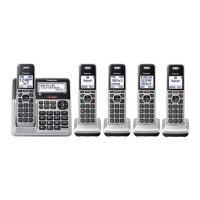
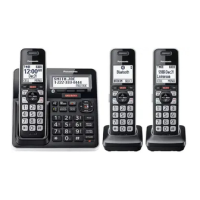

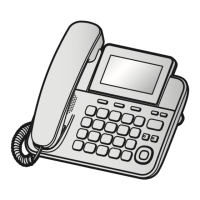
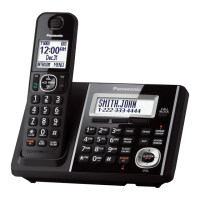

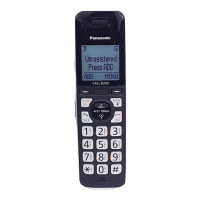
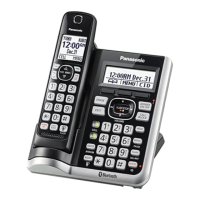
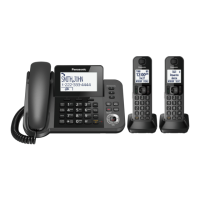
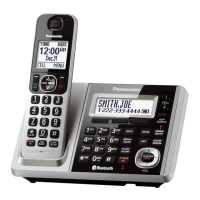
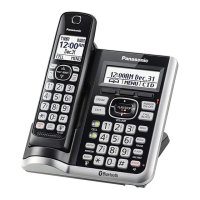
